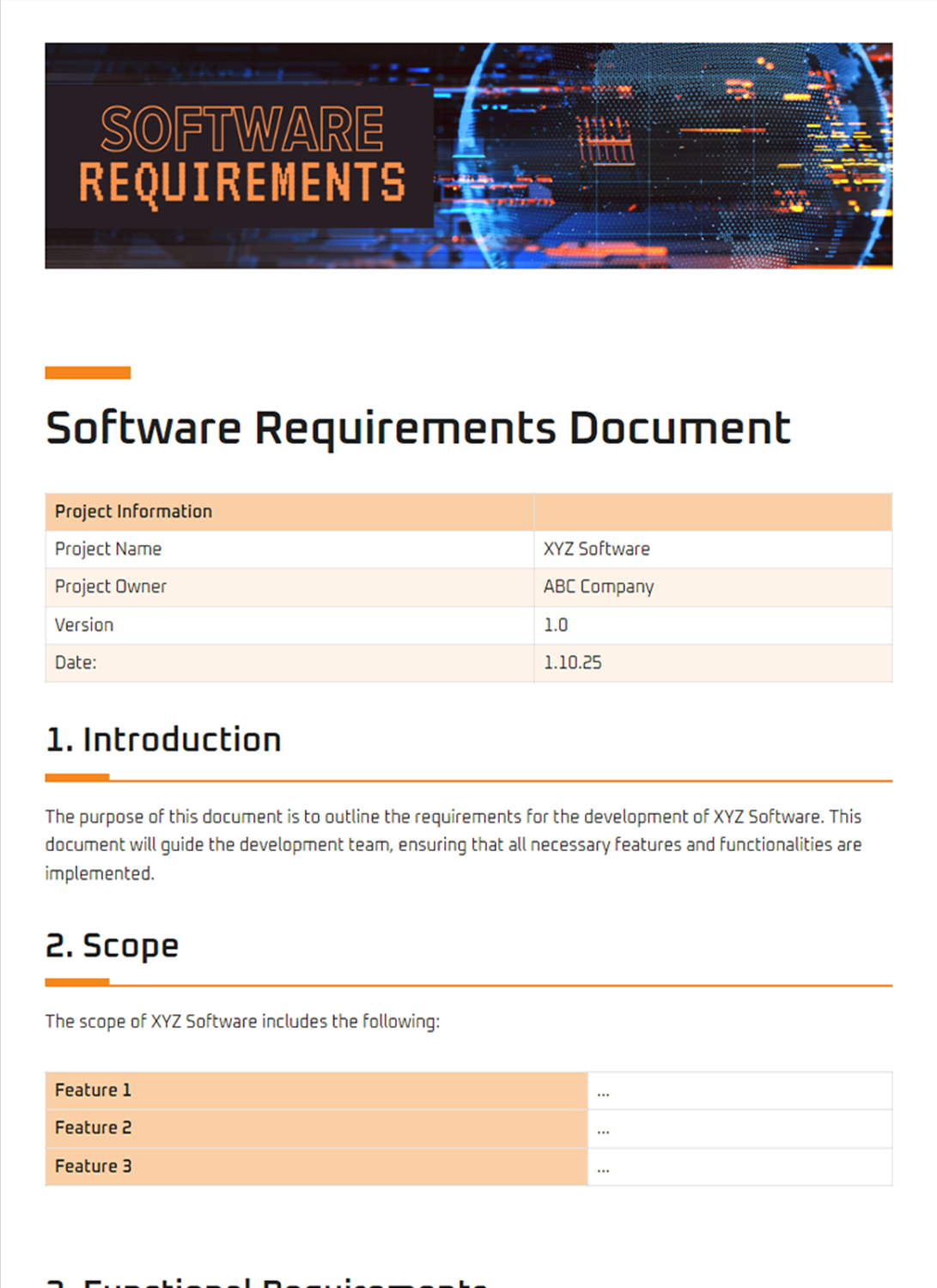Are you developing a software system and experiencing difficulties in defining and documenting its essential requirements?
A well-structured software system requirements template can streamline this process, ensuring a clear understanding between stakeholders and a solid foundation for project success. In this comprehensive guide, we will explore the benefits, structure, and best practices of using a software system requirements template.

Delving into the Benefits
A software system requirements template offers numerous advantages that simplify the requirements gathering and documentation process.
Firstly, it provides a standardized framework, ensuring consistency and completeness in documenting requirements. This eliminates the risk of overlooking critical details and helps avoid misinterpretations or misunderstandings among stakeholders.
Moreover, a well-defined template facilitates communication, allowing stakeholders to express their needs clearly. It serves as a common language, bridging the gap between business analysts, software developers, and end-users.
By organizing requirements in a structured manner, the template streamlines the review and approval process. It enables stakeholders to identify and address potential conflicts or inconsistencies early on, preventing costly rework later in the development cycle.
Additionally, a software system requirements template serves as a valuable artifact for project baselines and future reference. It captures the initial project vision, allowing for traceability and adaptability as the project evolves.
The Anatomy of a Comprehensive Template
A software system requirements template typically consists of several essential sections, each addressing specific aspects of the system’s requirements.
**Functional Requirements:** This section describes the intended behavior of the system from a user’s perspective. It outlines the specific tasks or functions that the system must perform.
**Non-Functional Requirements:** These requirements focus on the broader characteristics of the system, such as performance, security, reliability, and usability. They define the constraints and expectations that the system must meet.
**Interface Requirements:** This section documents the interfaces between the software system and its external entities, including users, other systems, and hardware. It specifies the protocols, data formats, and communication mechanisms used.
**Design Constraints:** This section captures any limitations or restrictions on the design or implementation of the software system. These constraints can be technical, budgetary, or operational in nature.
**Acceptance Criteria:** This section defines the criteria that must be met to consider the software system requirements as fulfilled. It provides objective measures against which the system’s functionality and performance will be evaluated.
Best Practices for Template Usage
To maximize the effectiveness of a software system requirements template, it is essential to adhere to best practices.
**Stakeholder Involvement:** Engage all relevant stakeholders throughout the requirements gathering process. Their input ensures that the template fully captures the system’s intended purpose and meets the needs of various user groups.
**Clarity and Precision:** Use clear and concise language in defining requirements. Avoid ambiguity and ensure that stakeholders have a shared understanding of the intended meaning.
**Traceability:** Establish traceability between requirements and other project artifacts, such as design specifications and test cases. This allows for easier change management and impact analysis.
**Flexibility and Adaptability:** The template should be flexible enough to accommodate changes in project scope or evolving stakeholder needs. Regular reviews and updates are crucial to maintain alignment with the project’s objectives.
Conclusion
A software system requirements template is an indispensable tool for defining, documenting, and communicating software system requirements. By providing a structured framework, facilitating communication, and streamlining the review process, it plays a vital role in ensuring project success.
When used effectively, a software system requirements template empowers stakeholders to clearly articulate their needs, promotes collaboration, and minimizes the risk of misunderstandings. It serves as a roadmap for software development, guiding the project team towards a successful outcome.
